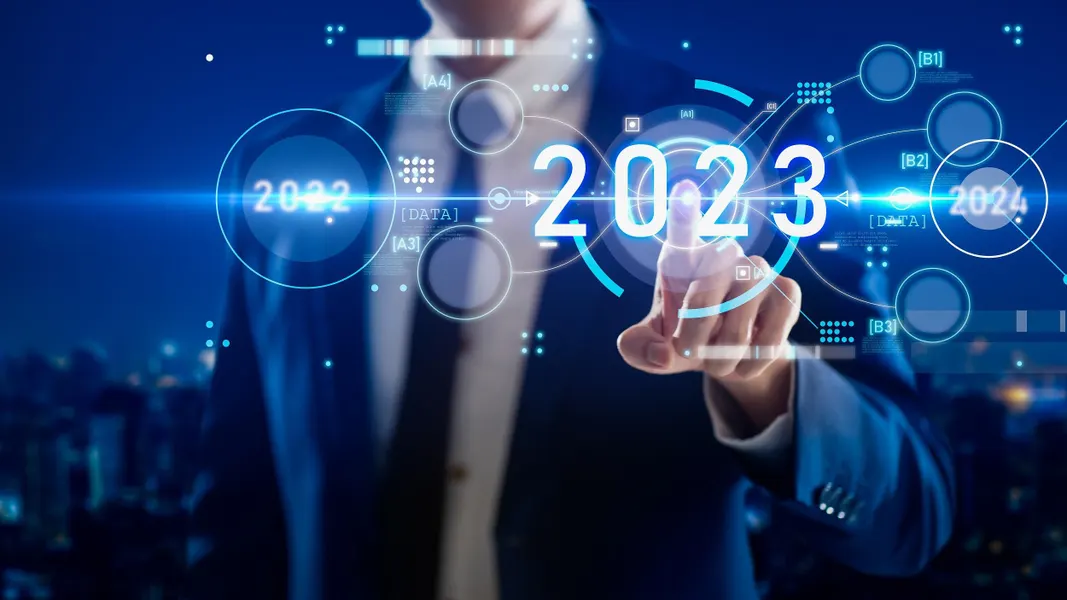Introduction
In today’s fast-paced digital world, technology continues to evolve at an unprecedented rate. As we look ahead to 2023, several emerging tech trends are set to reshape business operations across industries. In this blog post, we will explore these trends and their potential impact on the way organizations conduct their day-to-day activities.
1. Artificial Intelligence (AI) and Machine Learning (ML)
Artificial Intelligence and Machine Learning have been gaining significant traction in recent years, and their influence is set to grow even further in 2023. AI and ML technologies enable businesses to automate processes, analyze vast amounts of data, and make data-driven decisions. From chatbots and virtual assistants to predictive analytics and personalized customer experiences, AI and ML are revolutionizing the way businesses operate.
Implementing AI and ML solutions can help organizations streamline operations, increase efficiency, and reduce costs. By automating repetitive tasks, businesses can free up time for employees to focus on more strategic and value-added activities. Furthermore, AI-powered analytics can provide valuable insights that drive informed decision-making, leading to improved business outcomes.
2. Internet of Things (IoT)
The Internet of Things (IoT) refers to the network of interconnected devices that collect and exchange data. In 2023, the IoT is expected to have a profound impact on business operations. By connecting various devices and sensors, organizations can gather real-time data, monitor equipment performance, and optimize processes.
The IoT has the potential to transform supply chain management, asset tracking, and inventory management. For example, in the retail industry, IoT-enabled smart shelves can automatically monitor and restock products, reducing the need for manual inventory checks. In manufacturing, IoT devices can provide real-time insights into machine performance, enabling proactive maintenance and minimizing downtime.
3. Blockchain Technology
Blockchain technology, originally developed for cryptocurrency transactions, is now finding applications in various industries. Blockchain provides a secure and transparent way to record and verify transactions, eliminating the need for intermediaries. In 2023, businesses are likely to leverage blockchain to enhance supply chain transparency, streamline financial transactions, and improve data security.
With blockchain, organizations can create tamper-proof records of every transaction, ensuring transparency and accountability. This technology can enable faster and more secure cross-border payments, reduce fraud, and simplify complex supply chain processes. By eliminating the need for intermediaries, blockchain has the potential to revolutionize industries such as finance, logistics, and healthcare.
4. Augmented Reality (AR) and Virtual Reality (VR)
Augmented Reality and Virtual Reality technologies are no longer limited to the gaming and entertainment industries. In 2023, AR and VR are expected to play a significant role in transforming business operations. These immersive technologies can enhance customer experiences, improve employee training, and facilitate remote collaboration.
For example, in the retail sector, AR can enable customers to virtually try on clothes or visualize furniture in their homes before making a purchase. In the healthcare industry, VR can be used for realistic medical training simulations, reducing the need for expensive physical equipment. Additionally, AR and VR can enable remote teams to collaborate in virtual environments, saving time and travel costs.
Conclusion
As we look ahead to 2023, these tech trends are set to reshape business operations across industries. Artificial Intelligence and Machine Learning, Internet of Things, Blockchain Technology, and Augmented Reality and Virtual Reality are just a few examples of the transformative technologies that will drive innovation and efficiency in the business world. Embracing these trends can help organizations stay competitive and adapt to the evolving digital landscape.










